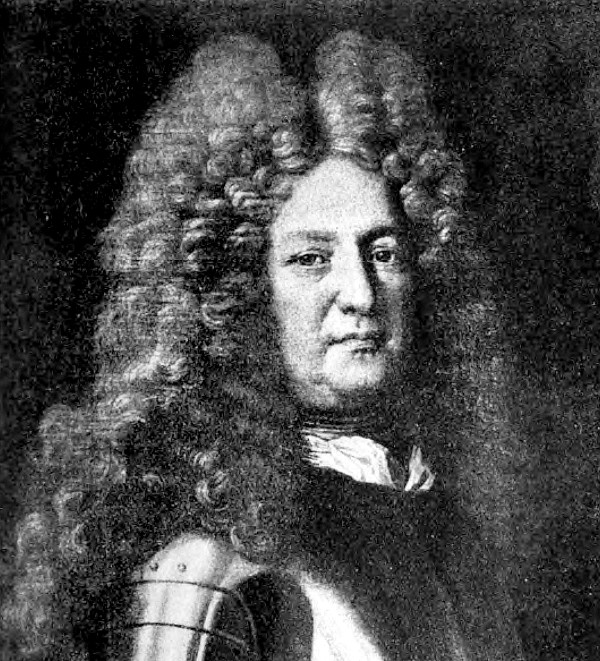I find this one to be one of the more unusual commmemorative coin requests, as it sought to commemorate a rather unfortunate event in colonial American history...
In March 1937, George Bradshaw Kelly (D-NY) in the House of Representatives, and Royal Samuel Copeland (D-NY) in the Senate, introduced companions bills that called for the striking of 50-cent pieces "in commemoration of the two hundred and fiftieth anniversary of the military expedition of the Marquis de Denonville, upon the order of Louis XIV, into the region now embraced by the State of New York, and in commemoration of the two hundred and sixty-sixth anniversary of the voyages and explorations of Robert Cavelier, Sieur de La Salle, into the aforesaid region, and for the aiding of the establishment of a permanent memorial collection under the auspices of the city of Rochester, State of New York, commemorating the influence of "France in America during the colonial period."
Quite a mouthful!
In the late 17th and early 18th centuries, the British and French competed with each other in the Great lakes region (among other places!) to gain the friendship and alliance of the indigenous Native Americans (the Iroquois/Seneca Tribe), control the area's rich fur trade and lay claim to vast territories within the North American continent.
Jacques Rene de Bresay, the Marquis de Denonville was sent to New France (i.e., France's possessions in present-day Canada) by King Louis XIV to serve as its Governor General (August 1685 to November 1689). Denonville was proactive in his efforts to establish the superior position of France in the region, which resulted in strike-first initiatives against the British as well as the local Native Americans. In 1687, he led a punitive campaign against the Iroquois-Seneca in present-day New York in which the homes and crop fields of multiple Seneca villages were burned/destroyed. To say the least, such actions did not endear Denonville, or the French, to the local Seneca.
Jacques Rene de Bresay, the Marquis de Denonville (Image Credit: Parkman, Francis. Count Frontenac and New France under Louis XIV. Boston: Little, Brown and Company, 1897. Public Domain.)
(Image Credit: Parkman, Francis. Count Frontenac and New France under Louis XIV. Boston: Little, Brown and Company, 1897. Public Domain.) The French explorer, René-Robert Cavelier, sieur de La Salle is well-known for his 1682 exploration of the Mississippi and Illinois Rivers; his trip down the length of the Mississippi River led to his claiming of the Mississippi River basin to be the property of France and King Louis XIV - he named the area "La Louisiane." Prior to his Mississippi River trip, he explored areas in the Great Lakes region, including the area around present-day Lake Michigan, Lake Huron, Lake Erie and Lake Ontario during the 1671-1673 period. These pre-Mississippi River explorations are the subject referenced by the coin.
Robert Cavelier, sieur de La Salle (Image Credit: Chesnel, Paul. History of Cavalier de la Salle 1643-1687. Paris, France: Librarie Orientale et Americaine, 1901. Public Domain.)
(Image Credit: Chesnel, Paul. History of Cavalier de la Salle 1643-1687. Paris, France: Librarie Orientale et Americaine, 1901. Public Domain.)The House bill was referred to the House Committee on Coinage, Weights, and Measures; the Senate bill was referred to the Senate Committee on Banking and Currency.
The bills called for 25,000 half dollars of standard specificattions, with 5,000 of the coins to be struck in Denver and 20,000 in Philadelphia. The unbalanced mintage was a clear attempt at creating a special low mintage coin for collectors to pursue and create hype about the issue, with the hope (expectation?) that the interest in the "low mintage" Denver coin would spillover onto the higher-mintage Philadelphia coin and drive its sales.
The coins were to have been struck for the benefit of the Denonville-La Salle Committee of the New York State Archeological Association.
Neither of the bills was reported out of Committee, nor considered on the floor of either chamber. The bills were yet another failed attempt in 1937 to secure a commemorative half dollar. Considering the subject, the rejection gets no argument from me!
For more of my topics on commemorative coins and medals, including more What If? stories, see:
Commems Collection.
























